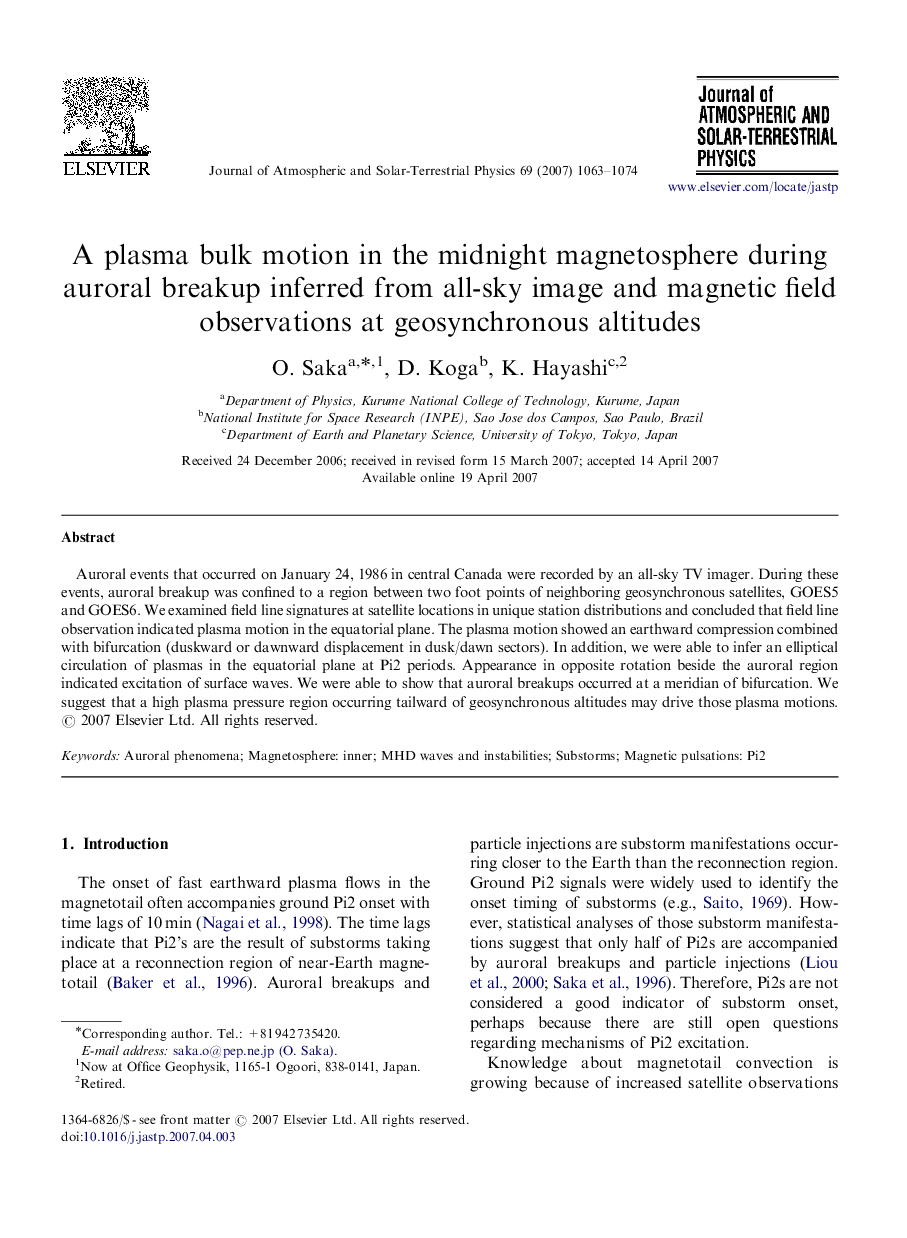| Article ID | Journal | Published Year | Pages | File Type |
|---|---|---|---|---|
| 1778246 | Journal of Atmospheric and Solar-Terrestrial Physics | 2007 | 12 Pages |
Auroral events that occurred on January 24, 1986 in central Canada were recorded by an all-sky TV imager. During these events, auroral breakup was confined to a region between two foot points of neighboring geosynchronous satellites, GOES5 and GOES6. We examined field line signatures at satellite locations in unique station distributions and concluded that field line observation indicated plasma motion in the equatorial plane. The plasma motion showed an earthward compression combined with bifurcation (duskward or dawnward displacement in dusk/dawn sectors). In addition, we were able to infer an elliptical circulation of plasmas in the equatorial plane at Pi2 periods. Appearance in opposite rotation beside the auroral region indicated excitation of surface waves. We were able to show that auroral breakups occurred at a meridian of bifurcation. We suggest that a high plasma pressure region occurring tailward of geosynchronous altitudes may drive those plasma motions.
